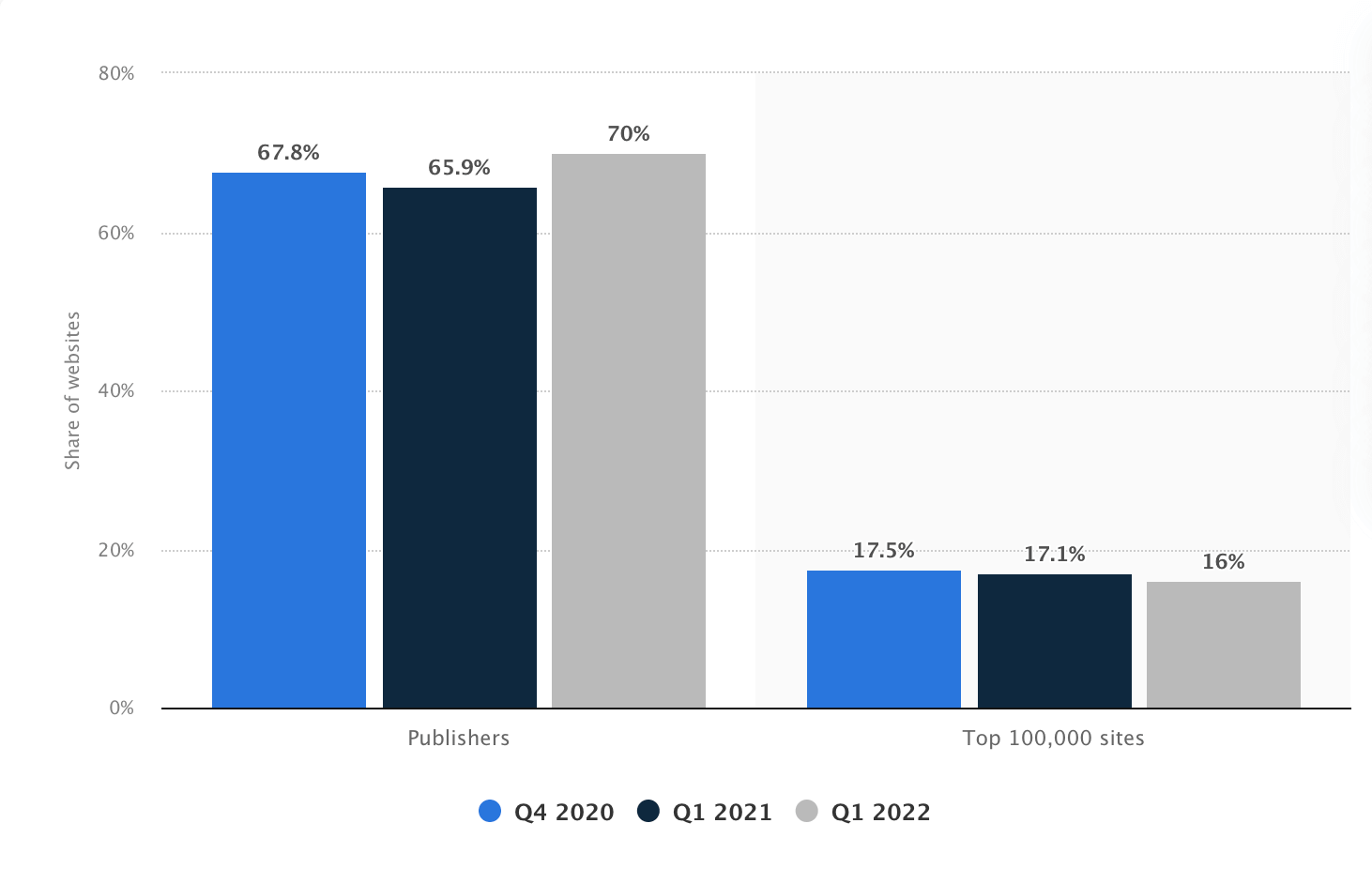A Guide to the Real-Time Auction Technique Improving Ad Efficiency and Effectiveness.
Header bidding is a cutting-edge technique that is transforming the online advertising industry. It is a real-time auction process that involves multiple demand sources bidding on ad impressions at the same time before the primary auction of the ad server. By using header bidding, publishers can receive multiple bids for their inventory and choose the highest bidder, leading to higher revenue and a more efficient ad sales process. In this guide, we’ll explore the basics of header bidding, how it works, and why it is becoming increasingly popular among publishers and advertisers.
The history of header bidding can be traced back to around 2014 when it first emerged as a way to bypass the limitations of traditional waterfall setups in programmatic advertising. The main idea behind header bidding was to allow multiple demand sources to bid on ad impressions simultaneously, rather than in a sequential manner as was the case with traditional waterfalls.
The exact origin of header bidding is not clear, but it is believed to have been developed by independent ad tech companies in an effort to improve the efficiency and transparency of programmatic advertising. Over time, header bidding gained popularity among publishers and advertisers as it provided a more fair and efficient way to sell and buy ad impressions, leading to its widespread adoption in the industry.
Today, header bidding is considered one of the most important trends in programmatic advertising, and it is widely used by publishers and advertisers to maximize their revenue and improve the overall quality of online advertising.
The challence: make compatible with AdManager and Google AdExchange dynamic allocation.
The challenge of making header bidding compatible with Google Ad Manager lies in the integration of line items and key values between the two platforms. Header bidding operates in real-time and involves multiple demand sources bidding on ad impressions simultaneously. On the other hand, Google Ad Manager is a more traditional ad server that uses a sequential process to match line items and key values with ad impressions.
The main challenge is to find a way to bring the real-time nature of header bidding into the sequential process of Google Ad Manager while preserving the transparency, fairness, and efficiency of the header bidding process. This requires a high degree of technical skill and expertise in both header bidding and Google Ad Manager, as well as a deep understanding of the underlying algorithms and data structures involved.
The solution to this challenge typically involves the use of a wrapper or adapter that sits between the header bidding code and the Google Ad Manager line items, allowing the two systems to communicate and exchange information seamlessly. The goal is to ensure that header bids are properly translated into line items and key values, and that the header bidding process is fully integrated into the Google Ad Manager ecosystem.
Overall, the challenge of making header bidding and Google Ad Manager compatible requires a deep understanding of both systems, as well as a willingness to experiment and iterate until a solution is found that works for all parties involved.
H.B. Client Side and Javascript.
One of the ways to implement header bidding is through the use of client-side JavaScript. In this setup, the header bidding code is executed in the browser of the user visiting the website, allowing the header bidding process to occur in real-time. The header bidding JavaScript code communicates with multiple demand sources, collecting bids from each source and sending them to the ad server for processing.
Here’s an example of a simple header bidding implementation using JavaScript:
<script type="text/javascript">
var adUnits = [{ code: 'ad-unit-1', sizes: [[300, 250], [300, 600]],
bids: [{
bidder: 'bidder1',
params: {
placementId: 123456
}
}, {
bidder: 'bidder2',
params: {
placementId: 654321
}
}]
}];
// Initialize header bidding
var pbjs = pbjs || {};
pbjs.que = pbjs.que || [];
pbjs.que.push(function() {
pbjs.addAdUnits(adUnits);
pbjs.requestBids({
bidsBackHandler: function(bidResponses) {
console.log(bidResponses);
}
});
});
</script>In this example, an ad unit is defined with a code, a set of sizes, and an array of bids. The bids array contains objects representing the bids from different demand sources. The header bidding code is then initialized and the bids are requested through the pbjs.requestBids function. The bids are returned through the bidsBackHandler function, which logs the bid responses to the console.
Note that this is just a simple example and there are many different ways to implement header bidding in JavaScript. For more information and a comprehensive guide to header bidding, you can visit the website prebid.org, which provides extensive documentation and resources for header bidding developers.
Client side or server side?
Header bidding can be implemented either on the client side or on the server side.
Client-side header bidding is when the header bidding code is executed in the browser of the user visiting the website. This allows the header bidding process to occur in real-time, with the header bidding JavaScript code communicating with multiple demand sources, collecting bids from each source, and sending them to the ad server for processing.
Server-side header bidding, on the other hand, is when the header bidding process is executed on a server, rather than in the browser. In this setup, the header bidding code is run on the ad server or a separate server specifically designated for header bidding. This approach can provide greater privacy and security, as the user’s data is not processed in the browser. Additionally, server-side header bidding can reduce the latency of the header bidding process and improve the scalability of the overall system.
In general, the choice between client-side and server-side header bidding depends on the specific requirements of the website and the goals of the advertising campaign. Both approaches have their own advantages and disadvantages, and the best choice will depend on the trade-offs between real-time processing, latency, privacy, security, and scalability.
What is Prebid.js?
Prebid.js is an open-source JavaScript library that enables publishers to implement header bidding on their websites. It provides a standardized way for publishers to interact with multiple demand sources, collect bids from each source, and send them to the ad server for processing.
With Prebid.js, publishers can easily integrate with multiple demand sources, including ad exchanges, SSPs, and DSPs, without having to write custom code for each individual source. Prebid.js also provides a flexible and configurable architecture that can be tailored to the specific requirements of the website and the goals of the advertising campaign.
In addition to header bidding, Prebid.js also provides other features and tools to help publishers maximize their advertising revenue, such as bid caching, analytics, and debugging tools.
Prebid.js is widely used in the digital advertising industry and is considered the de facto standard for header bidding. It is maintained by a community of developers and is supported by companies across the digital advertising ecosystem, including demand sources, ad servers, and technology providers.
What is Header Bidding Wrapper?
management of header bidding on a website. It is essentially a layer of software that sits between the publisher’s website and the header bidding partners, abstracting the underlying complexities of header bidding and providing a unified interface for working with multiple demand sources.
Header bidding wrappers have become increasingly popular in the digital advertising industry, as they help to streamline the header bidding process and reduce the time and effort required to implement and maintain header bidding. Some of the benefits of using a header bidding wrapper include:
- Simplified integration: A header bidding wrapper provides a simple and consistent way to integrate with multiple demand sources, eliminating the need to write custom code for each partner.
- Improved performance: Header bidding wrappers can optimize the header bidding process by managing the timing and execution of header bidding calls, reducing latency and improving page load times.
- Centralized management: With a header bidding wrapper, all header bidding partners can be managed from a single interface, making it easier to add, remove, or update partners as needed.
- Improved reporting and analytics: Header bidding wrappers can provide detailed reporting and analytics on the performance of header bidding campaigns, helping publishers to optimize their advertising strategies.
Some popular header bidding wrappers include Prebid.js, AppNexus, and PubMatic. These tools are widely used by publishers and provide a range of features and benefits to help simplify the implementation and management of header bidding.
What Are the Benefits of Header Bidding for Publishers?
Header bidding has become a popular and widely adopted technique in the digital advertising industry, and there are many benefits for publishers who implement header bidding on their websites. Some of the most notable benefits include:
- Increased revenue: By allowing multiple demand sources to compete for inventory simultaneously, header bidding can increase the revenue that publishers earn from their advertising space.
- Improved competition: Header bidding levels the playing field for demand sources, providing smaller players with an opportunity to compete with larger players and giving publishers access to a wider range of demand sources.
- Better control: Header bidding gives publishers more control over their inventory, enabling them to make more informed decisions about the value of their ad space and which demand sources to work with.
- Improved user experience: By reducing the time it takes for pages to load and improving the overall performance of the website, header bidding can enhance the user experience for visitors to the site.
- Increased transparency: Header bidding provides greater transparency into the bidding process, allowing publishers to see the bids being submitted by different demand sources and helping to reduce the risk of fraud.
- Enhanced targeting: With header bidding, publishers can collect more data about their users and use this information to deliver more relevant and targeted ads, improving the overall experience for both users and advertisers.
Overall, header bidding can provide significant benefits for publishers, helping to maximize the value of their advertising space and provide a better experience for users.

